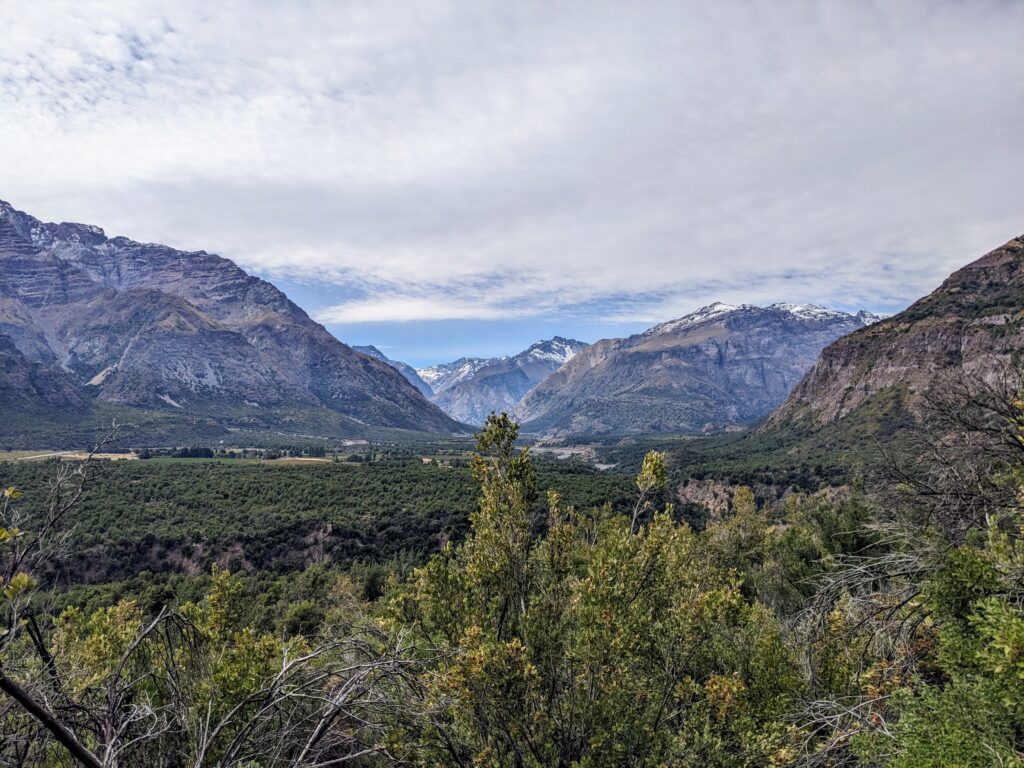
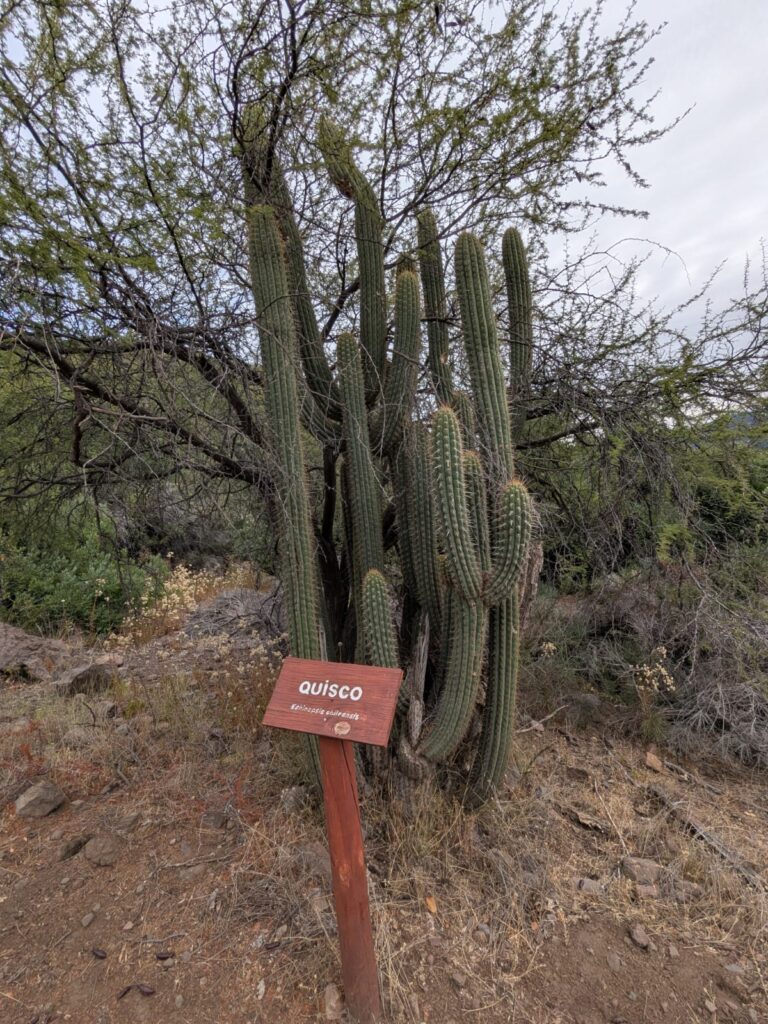
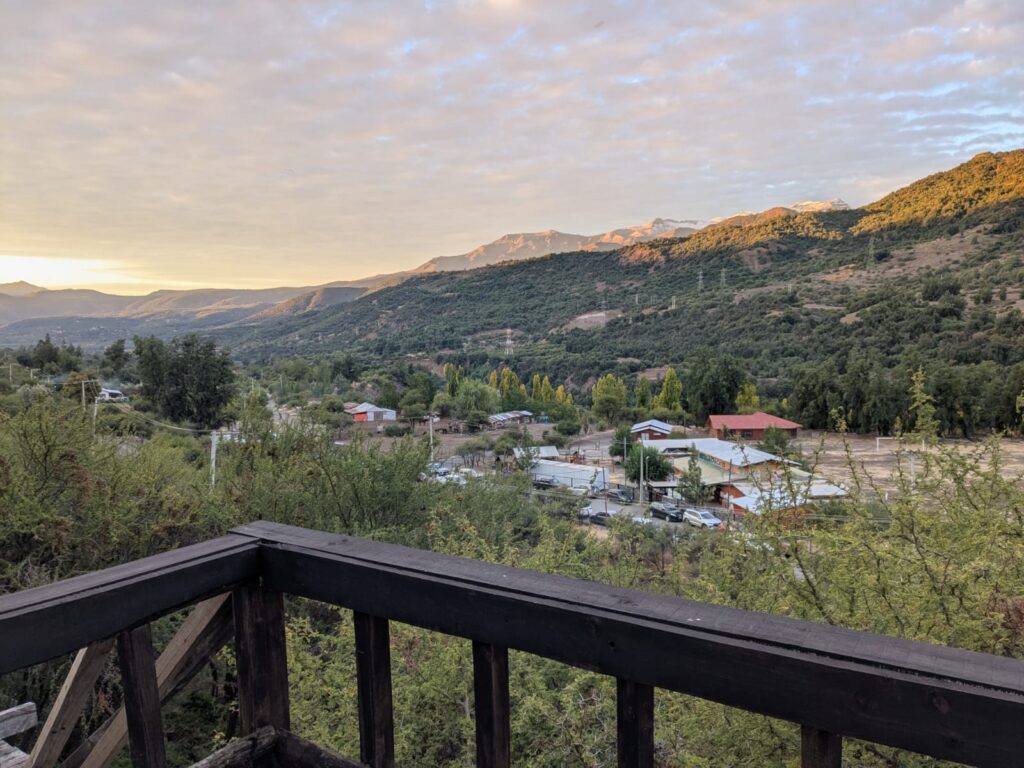
Introduction
If you read our last blog you will know that, following a service including a coolant change, we found oil in Phil’s (the van!) coolant tank. We noticed the issue whilst we were visiting Conguillio National Park. As such we carefully drove back to the garage in Temuco that did the service, where the mechanic, Eduardo, offered to take a look at the issue. Following inspection, it appears that we have not only have a cracked oil cooler, but also an issue with the cylinder head.
Not the best news – this was going to be a long and expensive issue to fix as the cylinder head needed to be sent off to a workshop to be repaired. However, we were able to see the positives. We were grateful that we managed to spot the issue early, and thus didn’t cause further damage to the engine. And, we didn’t break down in the middle of nowhere. We were also very appreciative as we had found an excellent mechanic.
Eduardo is very knowledgeable, he managed to source all the necessary parts, and he has a competent and hard-working team. And, to top it off, he generously offered for us to park, and stay in, the van on the land next to his house just outside of the city. This was super helpful as it meant that we didn’t need to find a hotel to stay in for the duration of the work. Although we liked staying on Eduardo’s land as it was very peaceful, we decided to make the most of the early autumn season by doing a short backpacking trip. As part of this trip, we visited Rio Los Cipreses National Reserve.
This reserve is in the foothills of the Andes, a couple of hours southeast of Santiago. We had it pinpointed as a ‘must-see reserve’ due to the presence of a unique, and sadly endangered, species of parrot called the tricahue or burrowing parakeet (so named as they nest in cliffside burrows)1. We’ve loved parrots ever since we worked on a scarlet macaw conservation project in Costa Rica nearly 10 years ago. In fact, we’ve set ourselves the goal of seeing as many species of macaw in South America as we can. And although not a species of macaw, tricahues are also beautifully colourful and charismatic parrots, and we were really keen to see them whilst in Chile.
Rio de Los Cipreses National Reserve
We arrived at the edge of the reserve after a long day of bus travel, to be greeted by our incredibly friendly Airbnb host, Miguel, as well as the sound of hundreds of burrowing parakeets flying overhead! We had booked to stay in a glamping dome, right outside the reserve in the community of Chacayes. When booking, we hadn’t appreciated that the dome sat right under the flight path of the parrots returning to their burrows each evening! Seeing them fly over at dusk was a wonderful sight, squawking away of course!
The next morning, after a wonderful breakfast prepared by Miguel, we entered Rio de los Cipreses National Reserve. We walked through a beautiful landscape of scrub-land and sclerophyllous forest with views of mountains and rivers2. As we were walking, we were being mocked by many Chilean mockingbirds, and we enjoyed seeing some impressively tall Quisco cacti and watching some really entertaining- looking Californian quails.
Upon reaching the viewpoint overlooking the cliffs where the main colony of tricahues nest, we were actually a little disappointed. They were so far away! With binoculars, it was possible to just about see the burrows in the cliff, with a few parrots sitting just by them, and others arriving and leaving. However, it was difficult to make out their colours. In fact, we decided that we had a better view of them from our dome! It seems that the best time to visit the nesting cliffs is at dusk, when they return en masse. However, the reserve is only open until 5pm at this time of year, so that wasn’t an option for us.
We enjoyed exploring the reserve a little more, following the Sendero Tricahues and Sendero Los Peumos. The views really were spectacular and we had a wonderful day. Returning to our dome, Miguel came over to greet us and we enjoyed practising our Spanish with him. He is such a great guy, eager to get to know his visitors and share joy in the nature that surrounds his home. As dusk approached, we cracked open a couple of beers, ready to enjoy the sunset and watch the parakeets flying overhead. It was such a beautiful experience and we felt very lucky that we were staying in such a fantastic location.
We had a great time at Rio de Los Cipreses National Reserve, but the main downside of backpacking – long bus journeys – faced us the next morning. However, we felt that it was time to return to Phil. We didn’t plan on spending too long away from him (mainly for cost reasons, but we also found ourselves missing him!). We were also eager to see how the work was progressing. We’ll update you on Phil’s progress in the next blog!
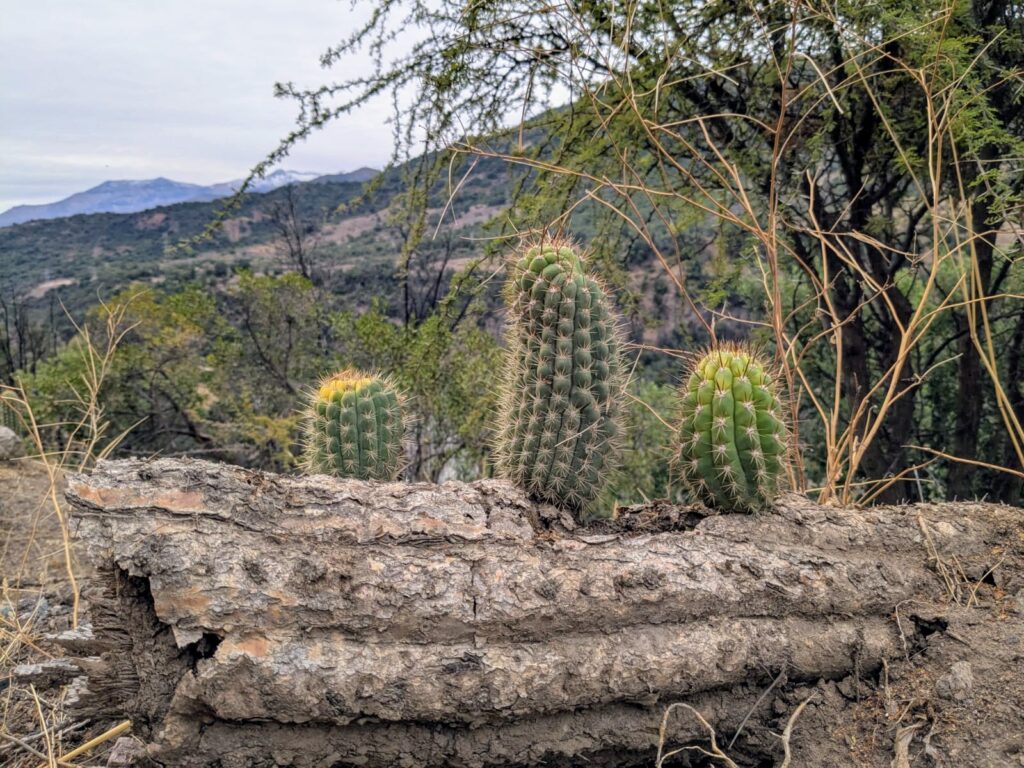
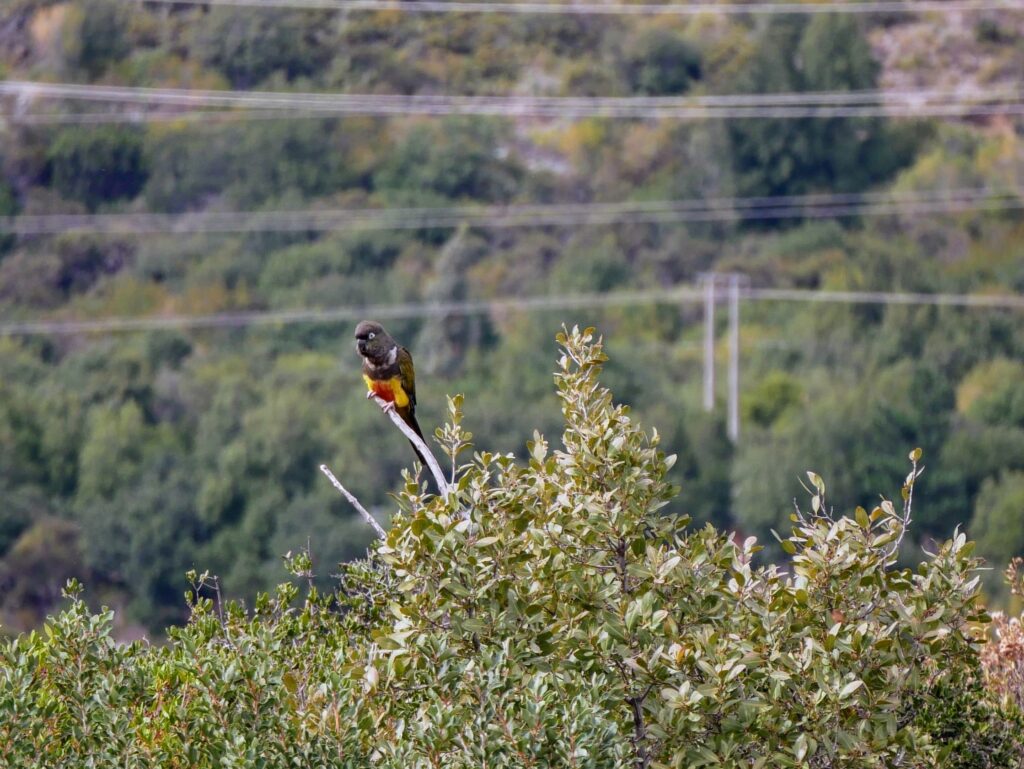
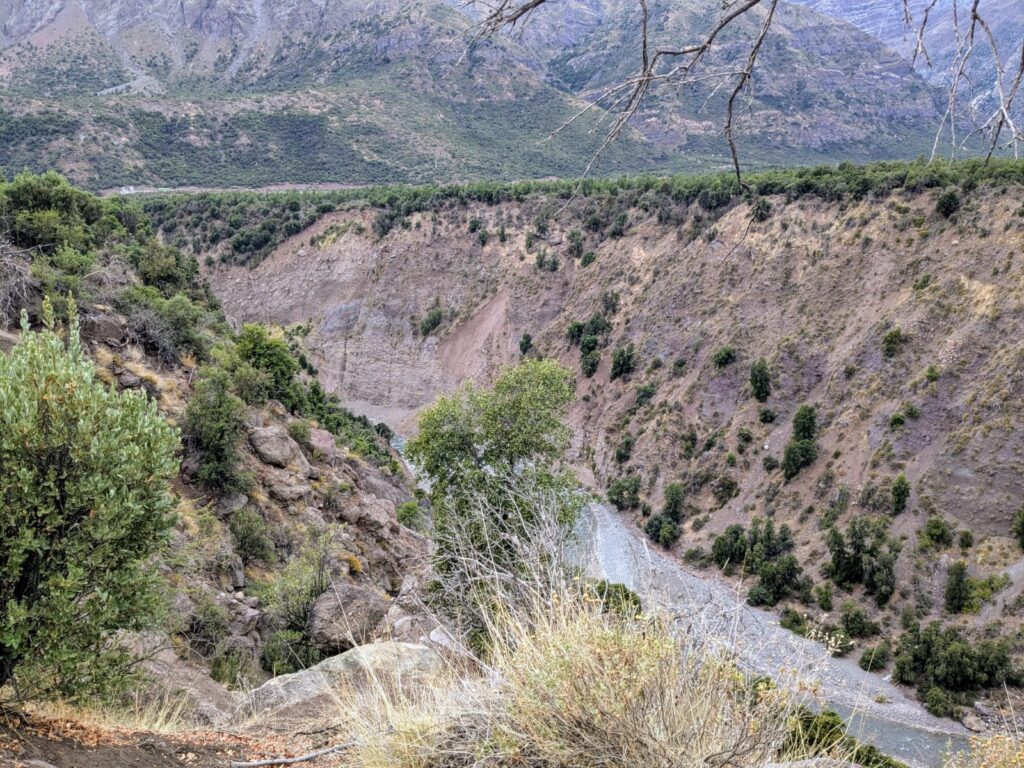
Species list
- Tricahue or burrowing parakeet
- Californian quail
- Southern house wren
- Chimango caracara
- Chilean mockingbird
- Austral blackbird
- Chilean tinamou
- Long-tailed meadowlark
- Moustached turca
- Green-backed firecrown
- Fire-eyed ducon
- Black-chested buzzard eagle
- Chilean swallow
Where else to see the Tricahue parrots
- Altos de Lircay National Reserve
- Tricahue Natural Park and the surrounding area. We managed to see them along Variante Armerillo, near Ruta 115 on our way to the border with Argentina at Paso Pehuenche.
- The Chaco region and southeastern Argentina3
How to get there
- By car: Driving south from Santiago along Ruta 5, take the exit at Rancagua. Follow H-29 to Machali, where the road becomes the H-25. Continue along here for around 14km, and take the H-265 through Coya to Puente Chacayes. From Puente Chacayes, turn right onto the H-33 for just 1km, before taking the left fork heading all the way to the reserve entrance. The road is paved the entire way to the entrance. If you choose to drive within the reserve, the roads are gravel.
- By bus: Rancagua is reachable by coach. From here, it is difficult to find information online, but it is possible to take buses right to the entrance of the reserve. First, take the bus from just outside Terminal O’Higgins de Rancagua bus station. This drops you in Machali, where you take a collective bus which terminates at the entrance to the national reserve.
